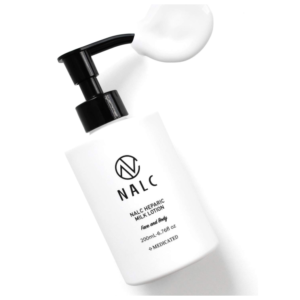目次
Data management in training AI chatbot with personality based on granular computing IEEE Conference Publication

If you followed our previous ChatGPT bot article, it would be even easier to understand the process.3. Since we are going to train an AI Chatbot based on our own data, it’s recommended to use a capable computer with a good CPU and GPU. However, you can use any low-end computer for testing purposes, and it will work without any issues. I used a Chromebook to train the AI model using a book with 100 pages (~100MB). However, if you want to train a large set of data running into thousands of pages, it’s strongly recommended to use a powerful computer.4. Finally, the data set should be in English to get the best results, but according to OpenAI, it will also work with popular international languages like French, Spanish, German, etc.
Now, you can use your AI bot that is trained with your custom data on your website according to your use cases. It is the perfect tool for developing conversational AI systems since it makes use of deep learning algorithms to comprehend and produce contextually appropriate responses. By training ChatGPT on your own data, you can unlock even greater potential, tailoring it to specific domains, enhancing its performance, and ensuring it aligns with your unique needs. Depending on the field of application for the chatbot, thousands of inquiries in a specific subject
area can be required to make it ready for use. Moreover, a large number of additional queries are
necessary to optimize the bot, working towards the goal of reaching a recognition rate approaching
100%.
Train items
Training a chatbot requires time, money, and the solid expertise of the specialists involved. You can ask further questions, and the ChatGPT bot will answer from the data you provided to the AI. So this is how you can build a custom-trained AI chatbot with your own dataset.
- Depending upon the use-case, our experts accurately classify your customers’ utterances in predefined intent categories for your chatbot to understand and recognise different intents which mean the same.
- These responses should be clear, concise, and accurate, and should provide the information that the guest needs in a friendly and helpful manner.
- The beauty of chatbots is that they can be trained on anything — from podcast transcripts to philosophy books.
- Ensure that the data that is being used in the chatbot training must be right.
If you have a large table in Excel, you can import it as a CSV or PDF file and then add it to the “docs” folder. You can also add SQL database files, as explained in this Langchain AI tweet. I haven’t tried many file formats besides the mentioned ones, but you can add and check on your own. For this article, I am adding one of my articles on NFT in PDF format. Training data for ChatGPT can be collected from various sources, such as customer interactions, support tickets, public chat logs, and specific domain-related documents.
1 Build your horizontal coverage
You can add words, questions, and phrases related to the intent of the user. The more phrases and words you add, the better trained the bot will be. But keep in mind that chatbot training is mostly about predicting user intents and the utterances visitors could use when communicating with the bot. If you want to train the AI chatbot with new data, delete the files inside the “docs” folder and add new ones. You can also add multiple files, but make sure to add clean data to get a coherent response.
- Doing this will help boost the relevance and effectiveness of any chatbot training process.
- It is essential to monitor your chatbot’s performance regularly to identify areas of improvement, refine the training data, and ensure optimal results.
- Since the emergence of the pandemic, businesses have begun to more deeply understand the importance of using the power of AI to lighten the workload of customer service and sales teams.
- But the bot will either misunderstand and reply incorrectly or just completely be stumped.
- Incorporating transfer learning in your chatbot training can lead to significant efficiency gains and improved outcomes.
It can provide the labeled data with text annotation and NLP annotation highlighting the keywords with metadata making easier to understand the sentences. ChatGPT is a, unsupervised language model trained using GPT-3 technology. It is capable of generating human-like text that can be used to create training data for natural language processing (NLP) tasks.
But when implementing a tool like a Bing Ads dashboard, you will collect much more relevant data. Chatbots have evolved to become one of the current trends for eCommerce. But it’s the data you “feed” your chatbot that will make or break your virtual customer-facing representation. In addition to manual evaluation by human evaluators, the generated responses could also be automatically checked for certain quality metrics.
I will create a JSON file named “intents.json” including these data as follows. Companies in the technology and education sectors are most likely to take advantage of OpenAI’s solutions. At the same time, business services, manufacturing, and finance are also high on the list of industries utilizing artificial intelligence in their business processes. OpenAI has reported that the model’s performance improves significantly when it is fine-tuned on specific domains or tasks, demonstrating flexibility and adaptability.
The Steps of Training an AI Chatbot
If your chatbot is more complex and domain-specific, it might require a large amount of training data from various sources, user scenarios, and demographics to enhance the chatbot’s performance. Generally, a few thousand queries might suffice for a simple chatbot while one might need tens of thousands of queries to train and build a complex chatbot. It includes studying data sets, training datasets, a combination of trained data with the chatbot and how to find such data. How to select the best dataset to train a chatbot and what is the finest way in which you can make chatbots by choosing the worthy chatterbot dataset?
This will establish each item in the list as a possible response to it’s predecessor in the list. For the training process, you will need to pass in a list of statements where the order of each statement is based
on its placement in a given conversation. ChatterBot comes with training classes built in, or you can create your own
if needed.
Benefits of generating diverse training data
Once you have your API key and dataset file, you can get started with the actual code. In this article, you’ll learn how to train and test your own chatbot using the OpenAI API, and how to turn it into a web app that you can share with the world. Chatbots are all the rage these days and we get a lot of requests for them at SpringML. They not only have that “AI” chic, they’re also offer faster customer service at a much cheaper cost – a huge win-win. Simply we can call the “fit” method with training data and labels.
There are 16 languages and the five most common conversation types you can pick from. If you’re creating a bot for a different conversation type than the one listed, then choose Custom from the dropdown menu. So, once you’ve registered for an account and customized your chat widget, you’ll get to the Tidio panel. Now, go to the Chatbot tab by clicking on the chatbot icon on the left-hand side of the screen.
Typically, the split ratio can be 80% for training and 20% for testing, although other ratios can be used depending on the size and quality of the dataset. Data annotation involves enriching and labelling the dataset with metadata to help the chatbot recognise patterns and understand context. Adding appropriate metadata, like intent or entity tags, can support the chatbot in providing accurate responses.
An Industry Insider Drives an Open Alternative to Big Tech’s A.I. – The New York Times
An Industry Insider Drives an Open Alternative to Big Tech’s A.I..
Posted: Thu, 19 Oct 2023 07:00:00 GMT [source]
This process involves verifying that the chatbot has been successfully trained on the provided dataset and accurately responds to user input. Once the data is prepared, it is essential to select an appropriate machine learning model or algorithm for the specific chatbot application. There are various models available, such as sequence-to-sequence models, transformers, or pre-trained models like GPT-3. Each model comes with its own benefits and limitations, so understanding the context in which the chatbot will operate is crucial. As the chatbot interacts with users, it will learn and improve its ability to generate accurate and relevant responses. Once the data has been prepared, it can be used to train the chatbot.
Will There Be An “Apple GPT” – Dataconomy
Will There Be An “Apple GPT”.
Posted: Wed, 25 Oct 2023 09:11:02 GMT [source]
Undertaking data annotation will require careful observation and iterative refining to ensure optimal performance. When training a chatbot on your own data, it is essential to ensure a deep understanding of the data being used. This involves comprehending different aspects of the dataset and consistently reviewing the data to identify potential improvements.
The keyword is the main part of the inquiry that lets the chatbot know what the user is asking about. So, in the case of “what are your opening hours”, the keywords will be “open” and “hours”. And the easiest way to analyze the chat history for common queries is to download your conversation history and insert it into a text analysis engine, like the Voyant tool.
Read more about https://www.metadialog.com/ here.
















